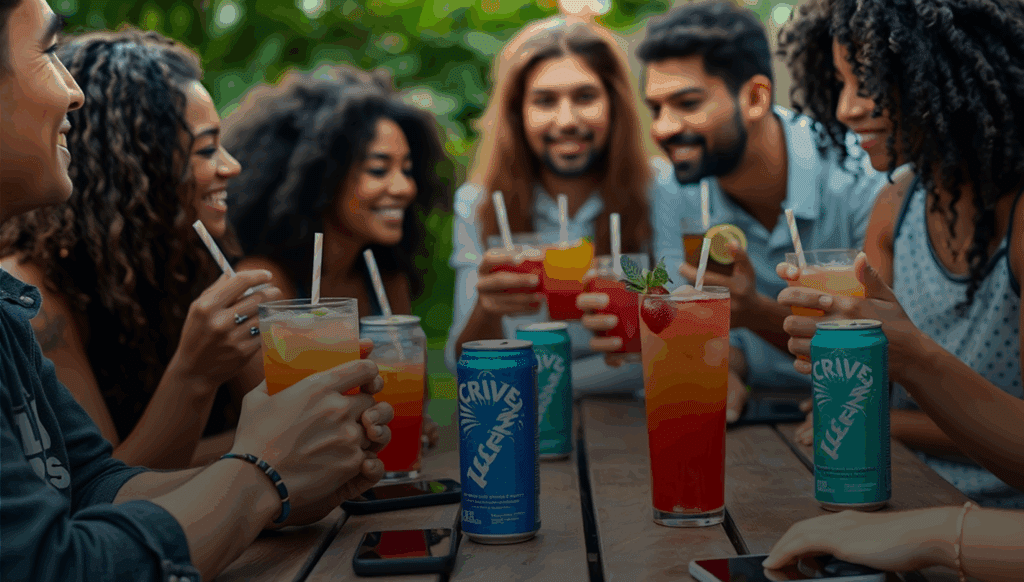For years, the narrative around Generation Z and alcohol has been marked by myths, health-obsessed, sober-curious, social-media shy. But a closer look at recent data from The Guardian, The Drinks Business, and News Nation reveals a more complex reality. Understanding the true drivers behind Gen Z’s shifting alcohol habits is essential for beverage brands aiming to stay relevant in a diversifying, digitally native market.
What Gen Z’s Drinking Habits Reveal About Tomorrow’s Beverage Market
According to The Guardian, Gen Z isn’t steering away from alcohol altogether, they’re just choosing different formats. The rise of ready-to-drink (RTD) products like BuzzBallz, hard seltzers, and revamped alcopops highlights a preference for convenience, customisation, and visual appeal. Diageo, for instance, has modernised Smirnoff Ice for a new audience, and brands across the board are tapping into a demand for varied ABVs, sweetness levels, and aesthetics that align with social media culture.
The Drinks Business offers a counterpoint to the sobriety myth. In its deep dive into Rabobank’s recent analysis, it found the most significant driver behind Gen Z’s lower alcohol consumption is not ideology, but economics. As Rabobank’s Bourcard Nesin bluntly puts it, “Gen Z ain’t got no money.” With lower incomes and delayed life milestones, today’s young adults are spending the same proportion of their income on alcohol as millennials once did, just from a smaller pot.
Further analysis from News Nation reinforces this, echoing Rabobank’s conclusion that many of the popular explanations, such as health concerns or the influence of cannabis legalisation, are overstated. Gen Z’s digital-first social life has contributed to reduced underage drinking, but as the generation matures and gains financial independence, their alcohol spending is expected to rise.
Industry Analysis
This convergence of financial constraint, digital culture, and evolving social norms is not just a short-term shift, it’s a structural change that demands rethinking how the beverage industry engages with younger consumers.
While RTDs and spirits are gaining ground with Gen Z women and people of colour, traditional categories like wine are seeing slower uptake. This reflects broader demographic changes: women now make up the majority of under-25 alcohol consumers, and Gen Z is the most ethnically diverse generation to date. For legacy brands, this means marketing must go beyond product tweaks, it must be inclusive, authentic, and shaped by diverse leadership.
The data also signals opportunity. The popularity of visually striking, portable drinks shows that Gen Z still values social rituals, just redefined for modern lifestyles. While binge drinking may be down, demand for shareable, Instagram-worthy experiences is up. Brands that respond with accessible price points, varied flavour profiles, and smart branding could build strong loyalty as this cohort ages into their prime spending years.
In Summary
Gen Z isn’t rejecting alcohol, they’re reshaping its role in their lives. As they grow in purchasing power, the biggest winners will be the brands that abandon stereotypes and engage with this generation’s realities: digital-first, financially cautious, and culturally diverse. If the industry adapts now, it stands to gain not only relevance but long-term resilience.
